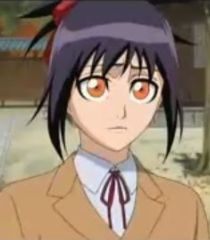Today, I am going to post on Millennium Actress (2001). I
like this film because it was very
touching as I could see how passion for someone will drive a person to achieve
a goal. Even though the lead character Chiyoko Fujiwara never managed to meet
the man of her dreams again, she is a
great actress because she put her emotions for him into acting. I found this to
be very emotional and different from Paprika(2006), which is more intellectual. Just like Paprika,
Satoshi Kon, shows different levels of reality and sometimes its difficult to
tell what is reality and fiction or what is past and present.
To make things more complicated, the film also involves a
director, Tachibana, who is trying to make a documentary about Chiyoko
Fujiwara. However, we see him in every story she tells so the flashbacks are
not reliable as they have his fantasy element of him being involved in the
scenes.
In the two pictures above, wee see him acting out a role while he is interviewing Chiyoko.in real life.
In all the scenes from Chiyoko's previous films,
the director always acts as the protector of Chiyoko.
The scene above is suppose to be a flashback and if u look carefully at the background you can see Tachibana's face. This is very good use of background and foreground as in the foreground Chiyoko is accompanied by the director she will marry but in the background is the person who genuinely cares for her but she does not even notice him.
The side kick of the director, Kyoji Ida is there for comic
relief. He has a few stock expressions.
Another sequence that shows how past recollections can bleed into a film is when Chiyoko talks to her mother:
The conversation continues seamlessly but Chiyoko's real life mother has been replaced by an actress while in the reflaction is the old lady who gives her the thousand year tea which makes her unable to forget the man she loves. We first see the old lady in a film that Chiyoko is acting in but the tea seems to have an effect on her real life and in real life she never gives up on looking for the man she met when she was a child.
In the 2 stills above Chiyoko is acting as a princess
from the past. The 2 gray dots on her face are meant to represent eye
brows of the aristocrats in the Sengoku period.
This is from a fantasy sequence when Chiyoko in
real life tries to find the artist she once met. She sees a painting
and the painting starts to move and the man she is lookong for waves
goodbye and walks away. He is drawn without facial features as she has forgotten what he looks like.
The still to the left is from the end of the film showing that Chiyoko who is dying in real life is actually going to space to look for the man again. Just like the plot line of the thousand year tea in her film, Chiyoko appears to really want to spend many life times looking for him.
I read that this film was actually based on the life of Setsuko Hara, who was born in 1920, a Japanese actress who retired suddenly and lead a reclusive life and is still living a reclusive life. The art of this film is not as complex as Paprika and seems completely hand drawn with no CGI effects this is appropriate for the film because the story is a simple love story which spends the ages of not only time but reality. If there had been too much special effects the emotions would not be that strong. In my previous post i wrote about Final Fantasy: The Spirits Within(2001) which came out i nthe same year as Millennium Actress(2001), Even though Final Fantasy had state of the art animation then, the CGI could not convey the emotions that Satoshi Kon did with his hand drawn characters. This is why I prefer Millennium Actress should not be technically good but emotionally supportive.






































